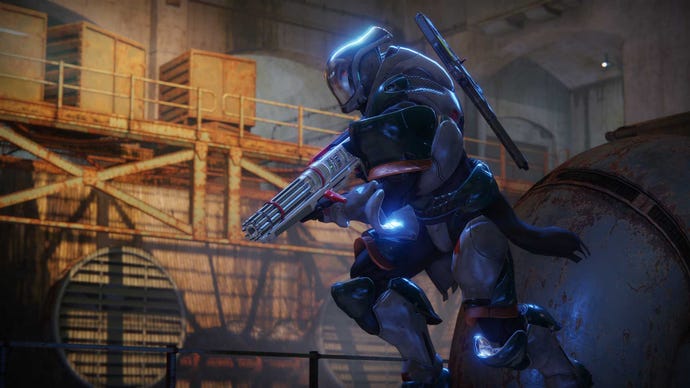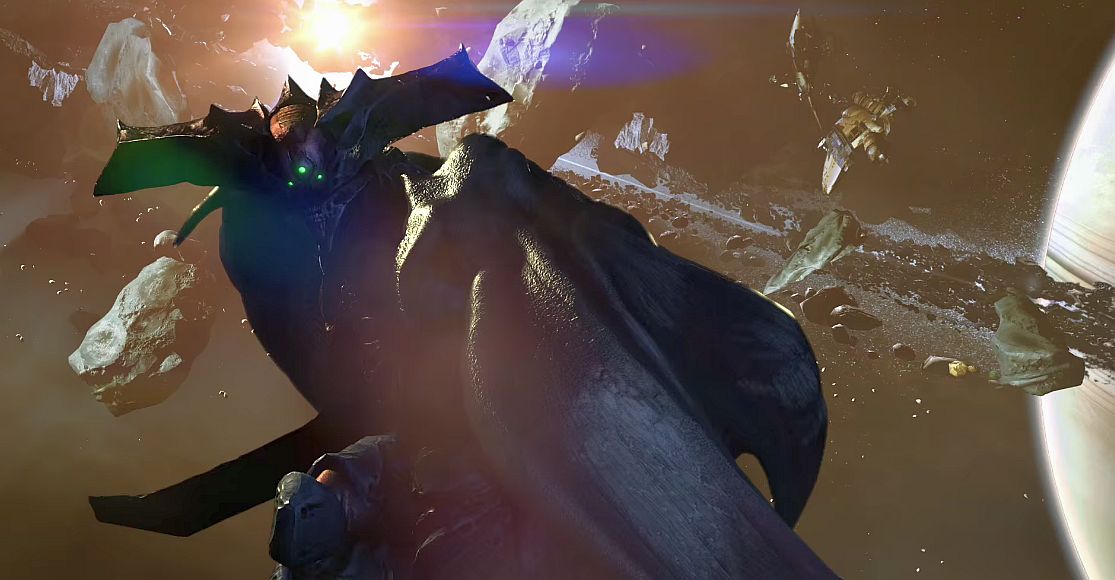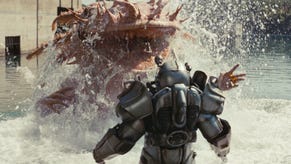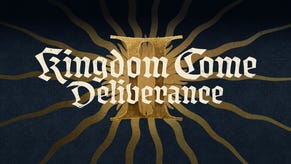The story of Destiny 2, part 2: what Bungie learned over three years of hits and misses
Destiny had a rough start, narratively, and Bungie spent three years trying to turn it around. Did it succeed, and what does it mean for Destiny 2?
Destiny 2 has an uphill battle to rescue the franchise from its reputation for rubbish storytelling, which the first Destiny certainly deserved. In the second episode of a three-part series, we'll take a look at what Bungie learned between Destiny and Destiny 2.
Right off the bat, Bungie began to revise its storytelling methods in response to player criticism.
Although it immediately became apparent that Bungie's old-fashioned release-game-release-DLC mindset was not going to satisfy player's hunger for new content, it lingered on for a year; it takes a long, long time to turn a ship that big around. Significant turnover in Bungie staff over the past few years are suggestive of a torturous process of reorganisation, as old ways of doing things are prised out of death grips along with obsolete development pipeline tech and other relics of a world before live games as service.
Let’s not be too harsh here: Destiny was the first attempt to make this kind of game for consoles. Bungie wasn't the only studio to underestimate the difficulties, and once it understood the situation, it took steps to change things. The same is true of its narrative approach: right off the bat, the studio began to revise its storytelling methods in response to player criticism.
Although we had to wait for The Taken King a whole year later before Bungie started to sort out its content delivery, the first DLC pack showed Bungie already adjusting to this brave new world where players wanted to have any sort of idea what was going on. Arriving just a few months after Destiny's 2014 release, The Dark Below’s campaign is much easier to follow, for those so inclined, and ties neatly into the raid rather than assuming players will somehow magically join the dots themselves.
As well as smoothing the journey, Bungie made a couple of key changes with The Dark Below's campaign that made its narrative more palatable. NPC Eris Morn is our guide, giving us a recognisable human element throughout. A focus on one enemy faction and a named antagonist – Crota – also makes it easier to keep track of things. For lore hounds there’s a great deal of Hive nerdery to unpack, especially with regards to the raid, and some of it is even in the game rather than the Grimoire cards.
House of Wolves took it a bit further when it turned up a few months later. Once again we have specific NPC faces to guide us through the campaign – Petra Venj and Variks – and a single antagonist – Skolas. Like Crota, Skolas is the ultimate challenge of the DLC in his amazing Prison of Elders encounter, but he also appears multiple times throughout the story missions and as the final boss of the campaign, so everyone knows who he is and gets the chance to beat him down even if they tune out all the briefings.
Following on the anniversary of Destiny's release, The Taken King is its first real expansion, and perhaps better described as a relaunch; it goes back and makes changes to the vanilla story presentation, hanging it together in threaded quests, in an attempt to communicate the story better and lead players through all available content. It kind of works, but not entirely; the world state of Destiny moved on far enough that the whole thing makes even less sense than previously, and no amount of mission notifications can make the story cohesive and satisfying.
By the time you get to the end of The Taken King, you know just enough about the mystical Hive woo-woo that it seems acceptable that you now need to go on a raid to really murder Oryx.
More successfully, new content in The Taken King draws on lessons learned and gives us more of what worked in Destiny and its DLC. NPCs drive the story – notably the much-loved Cayde-6 and good old Eris, but with appearances from Zavala and Ikora – and while we don’t ever see any of them in-game or even doing much in cut-scenes, radio chatter peppered liberally throughout grants them far more personality than the loading screen briefings ever did.
Like Skolas, antagonist Oryx is very much present; while the king does not descend to battle the player face-to-face, his “echoes” do. He appears in the opening cutscene to kick things off, and NPCs never let you forget that your goal is to take him down. By the time you get to the end of the story campaign and finally pop him a good ‘un, you know just enough about the mystical Hive woo-woo that it seems acceptable that you now need to go on a raid to really murder him. Other endgame missions like Strikes are placed in context; lieutenants of Oryx must be prevented from claiming his throne, and the Cabal presence on Oryx’s Dreadnaught must be kept under control. (Keep that last bit in mind for tomorrow, will you?)
Bungie filled out Destiny Year 2 with a live service rather than big content drops, but we kicked off Year 3 with Rise of Iron, the expansion we all know is a bit of filler so most of Bungie could get in another year of shoring up its tech ready for Destiny 2.
It wasn't a roaring success, narratively; the team responsible for The Taken King had moved on, and you can see that most clearly in the way the story takes a step backwards. The NPCs sent to guide us are mostly nobodies. SIVA, the “antagonist” of Rise of Iron, isn’t a personality you can love to hate; it’s just a thing. The final boss is something you have never seen before. The raid boss is also something you’ve never even heard of before.
Rise of Iron also proves that the original Destiny got something right, though. Bringing the stories of the Iron Lords out into the light just showed what a good idea it was to keep them locked away in the dark. It turns out that if you don’t have a really solid narrative sorted out behind your teasing hints, then a bunch of mysterious hints and teases are way more interesting than an inverse image reconstructed from those same snippets.
The Iron Lords are one-dimensional; the way Rise of Iron presents them, they sprang into existence and were murdered by SIVA and that’s pretty much it. There’s no depth to them and they don’t come across as real people. After the initial excitement of seeing open references to names hidden away in the lore, it’s hard to care about the Iron Lords, and that’s a disappointing pay off to years of teasing hints. The pathos of lonely Saladin, the last of the Iron Lords, is undercut sharply by the revelation that the rest of them weren’t that interesting, by your rapid and underwhelming promotion to the ranks of the Iron Lords, and also by the fact that another one of them survived and nobody really remarks on this fact.
Efrideet, the surprise surviving Iron Lord, is one of the most interesting bits of Rise of Iron, because there’s a suggestion that she disagrees with the war on the – well, we would say the Darkness, but as discussed yesterday that’s been ret-conned. Throwaway lines about bug-lovers suggest she may be a friend to the Fallen, something we’ve always known is possible, and that sympathy for the Fallen is more widespread than previously believed. This is promising; it was our first in-game hint that the whole Darkness versus Light conflict could go out the window, and there are loads of good stories to tell when cultures are in conflict.
It didn’t go anywhere, though, and that’s one of Destiny’s biggest problems: the more interesting stuff never goes anywhere. The Exo Stranger ends vanilla Destiny’s campaign and it feels like a hint that the real story is just around the corner – and of course it wasn’t, with all further releases exploring other tales. The Taken King ends with Eris Morn getting even more delightfully spooky than ever – which is immediately forgotten. There’s a suggestion that the Queen of the Awoken is still alive – but it never pays off. Rise of Iron was heavily promoted with hints at more information on Rasputin, the Warmind whose story felt like the core of the game way back in the Fallen chapters of vanilla Destiny, and who resurfaced in the Cabal chapter – but nothing came of it in Rise of Iron.
This is immensely frustrating for those players who show willing and engage with Destiny’s lore. All the big events in vanilla Destiny and its expansions follow the same basic pattern – threat rises, threat is put down – and very little of interest happens to anybody along the way. Characters do not grow, change and learn. The world state never really feels threatened, and is not altered by the player’s actions (although to be fair in a MMO or shared-worlds game that is pretty difficult to do outside of major content releases).
Although Destiny's DLC and expansions mostly shored up its story with memorable characters, clearer storylines and decent antagonists, it never managed to overcome the lack of solid background lore and unified plan for the future. As a result, we’re constantly teased with answers to the game’s big mysteries, to major plot developments and revelations, and the teases never pay off. That said: given how unsuccessfully Rise of Iron delivered on Destiny’s mysteries, perhaps it's a good thing Bungie hasn’t attempted to make good on its implicit narrative promises more often.
Check back in with The Story of Destiny 2, part 3 as we look at how lessons learned are already in evidence in Bungie next's big thing.












.jpg?width=291&height=164&fit=crop&quality=80&format=jpg&auto=webp)


